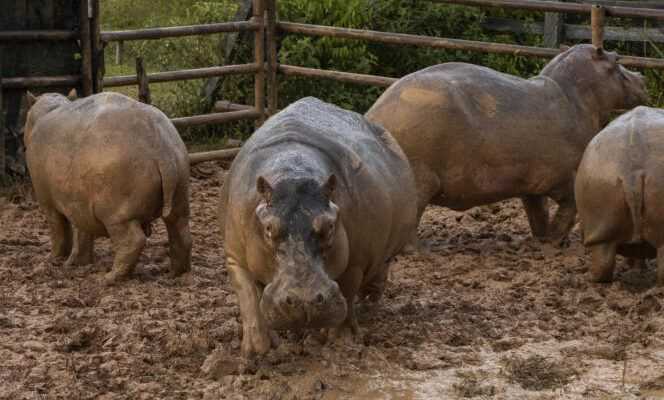It is probably the most spectacular sterilization operation in recent history, if not the most massive. The Colombian environmental agency Cornare is preparing to incapacitate sixty hippos living in freedom over a vast territory some 250 kilometers from Bogota. The announcement is surprisingly: first because these African pachyderms obviously have nothing to do in South America. Then because in their continent of origin, they are on the contrary threatened, and no one would consider depriving them of descent. But here it is: here, a few tens of kilometers from Medellin, the hippos have become an invasive species that would threaten the local ecosystem and could present a danger to the human population.
But what are these giants doing in Colombian rivers? There, the story becomes truly baroque. It plunges into the years of terror of the country, when the famous Pablo Escobar reigned supreme over the global cocaine trafficking. Little attached to human life, man showed a particular tenderness for animals. In his huge Hacienda Napoles, he had imported hundreds of species, preferably exotic, which he displayed with pride. Among them, the drug lord had brought four hippos from a California zoo.
“Coke Hippos”
Then luck changed for Escobar, killed by the police in 1993. Not for his four residents. While giraffes, zebras, antelopes and other flamingos were dispersed, the male and three female hippos were left behind, free to wade through the local mud and frolic at leisure. The rest is easy to imagine. The local, then international press has chronicled these “coke hippos”, happy as moguls, growing in number and in territory. Slowly at first, then faster and faster.
In 2019, the number was estimated at 65, spread over tens of kilometers, to the banks of the Rio Magdalena, the largest river in the country. So the authorities called on scientists for help. Two teams carried out surveys, published in scientific journals. Both shared the same observation: left to their own devices, in a territory devoid of predators and in a much less arid climate, the hippos of the Magdalena Medio valley had become an invasive species. In the review Ecology, in January 2020, the team led by Jonathan Shurin, from the University of California at San Diego, observed a modification of the local ecosystem, with an increased presence of carbon in the water, a significant variation in the content oxygen and an overproduction of cyanobacteria in the lakes where the big giants lived. The rest of the wildlife had not yet been disturbed. But in the long run, difficulties seemed inevitable, she said. Because the exponential progression observed led to a population of 785 individuals in 2040, possibly 7,089 in 2060.
You have 41.45% of this article to read. The rest is for subscribers only.
